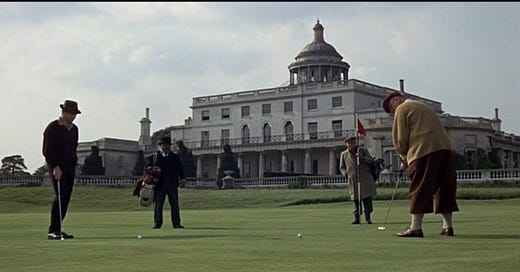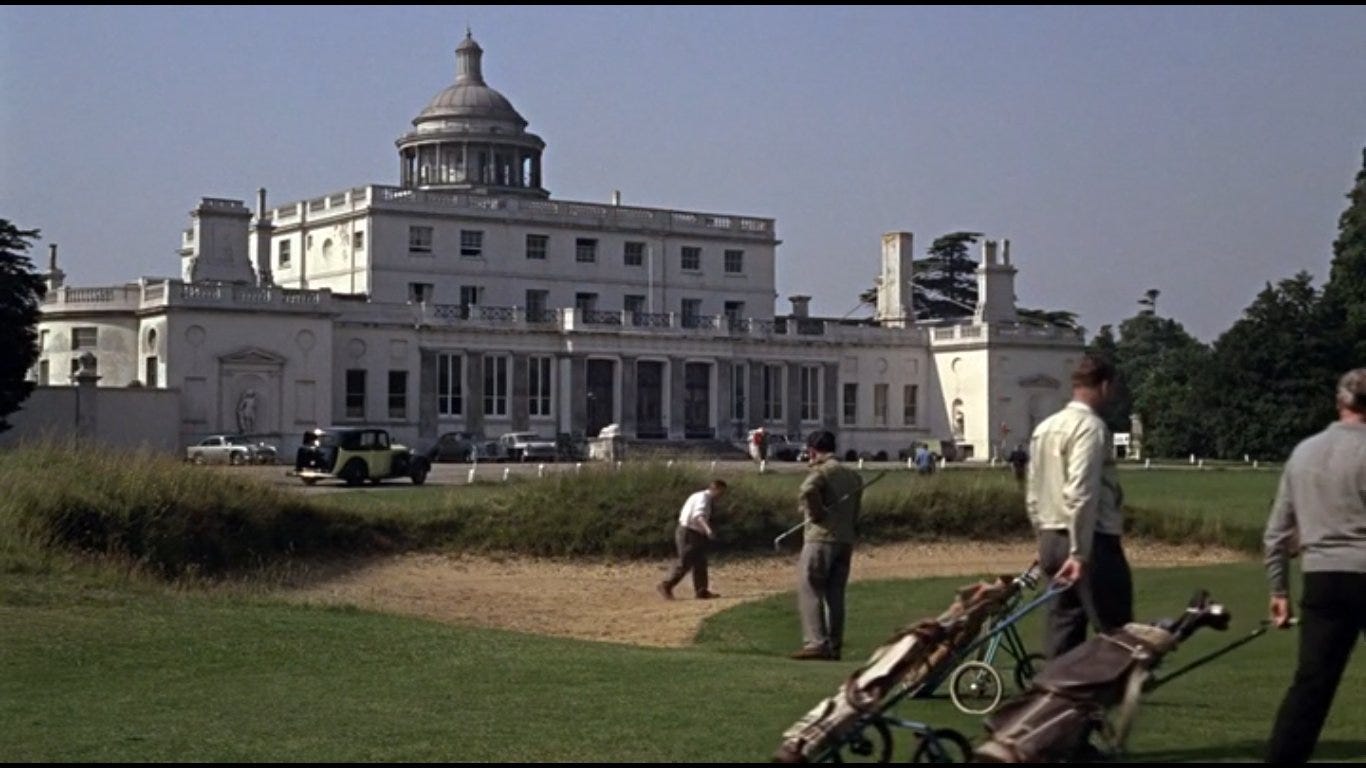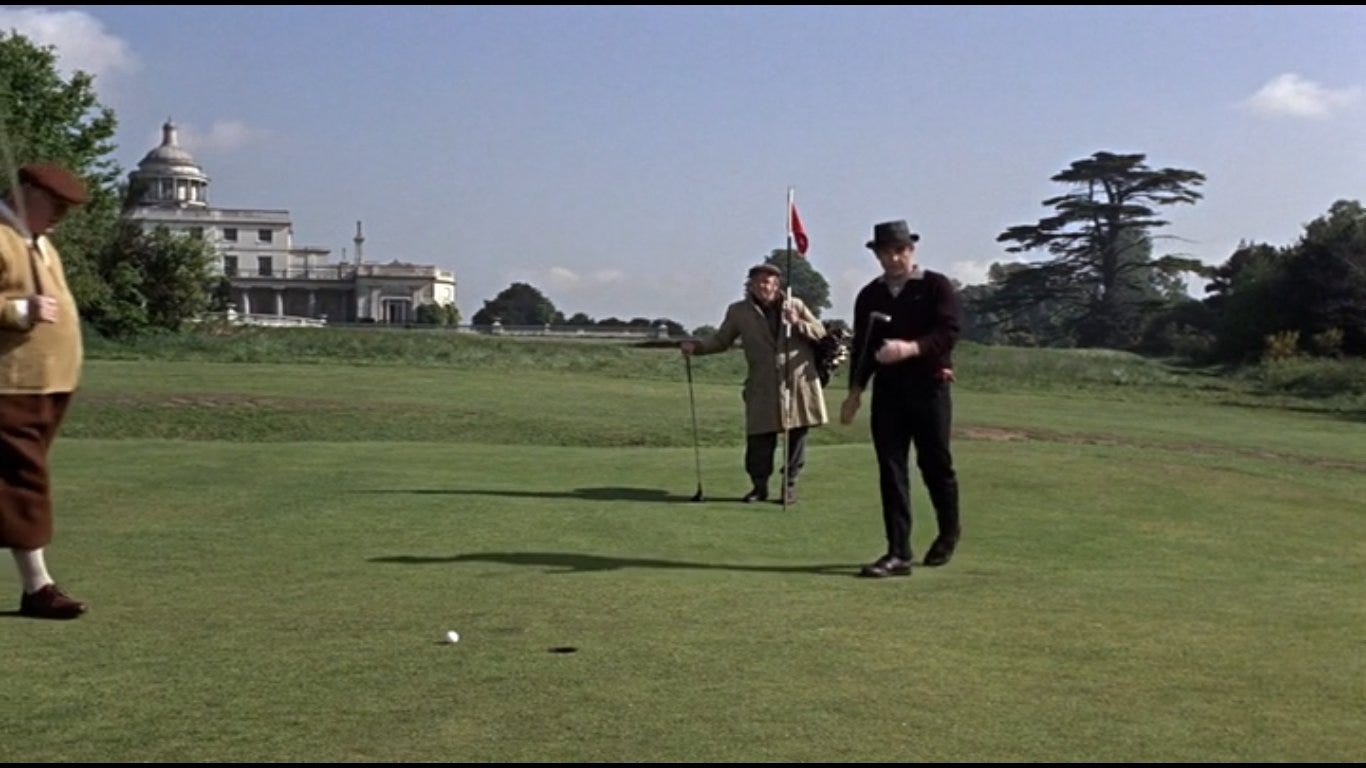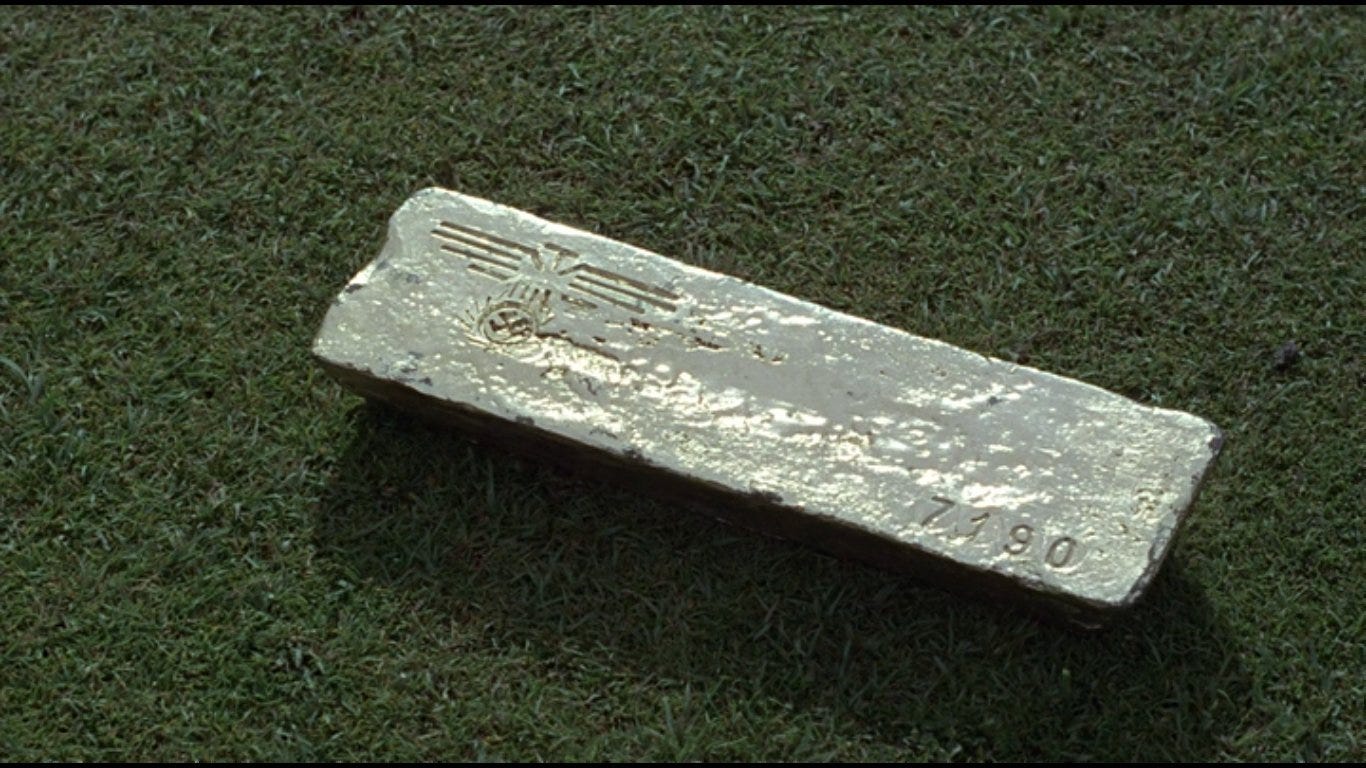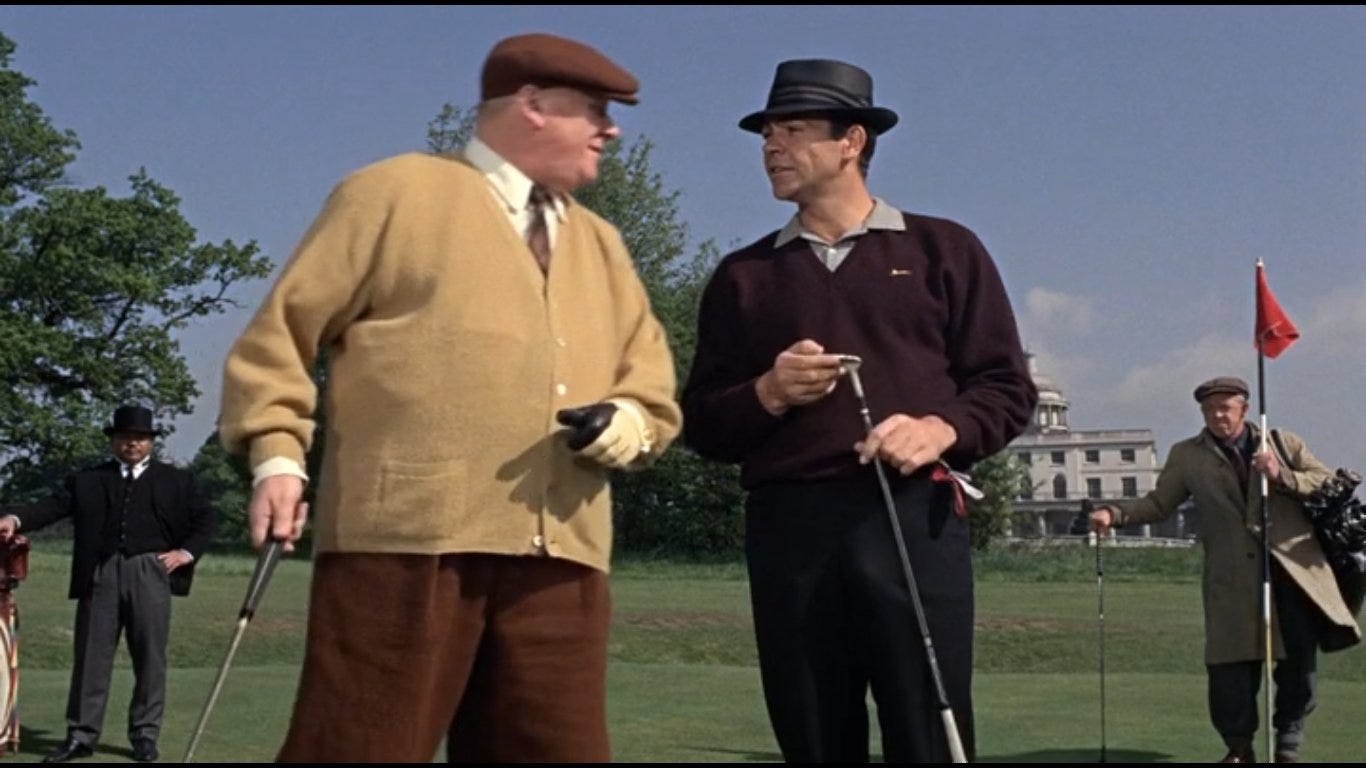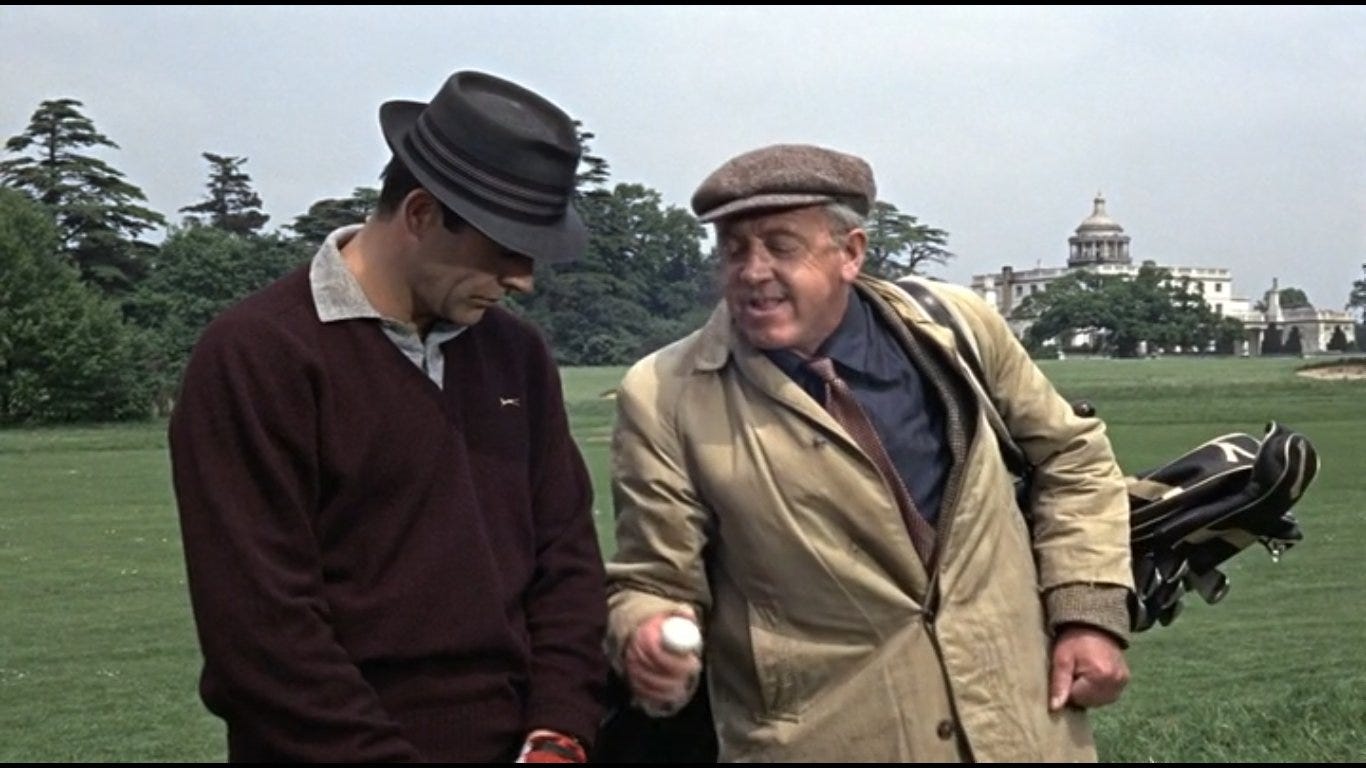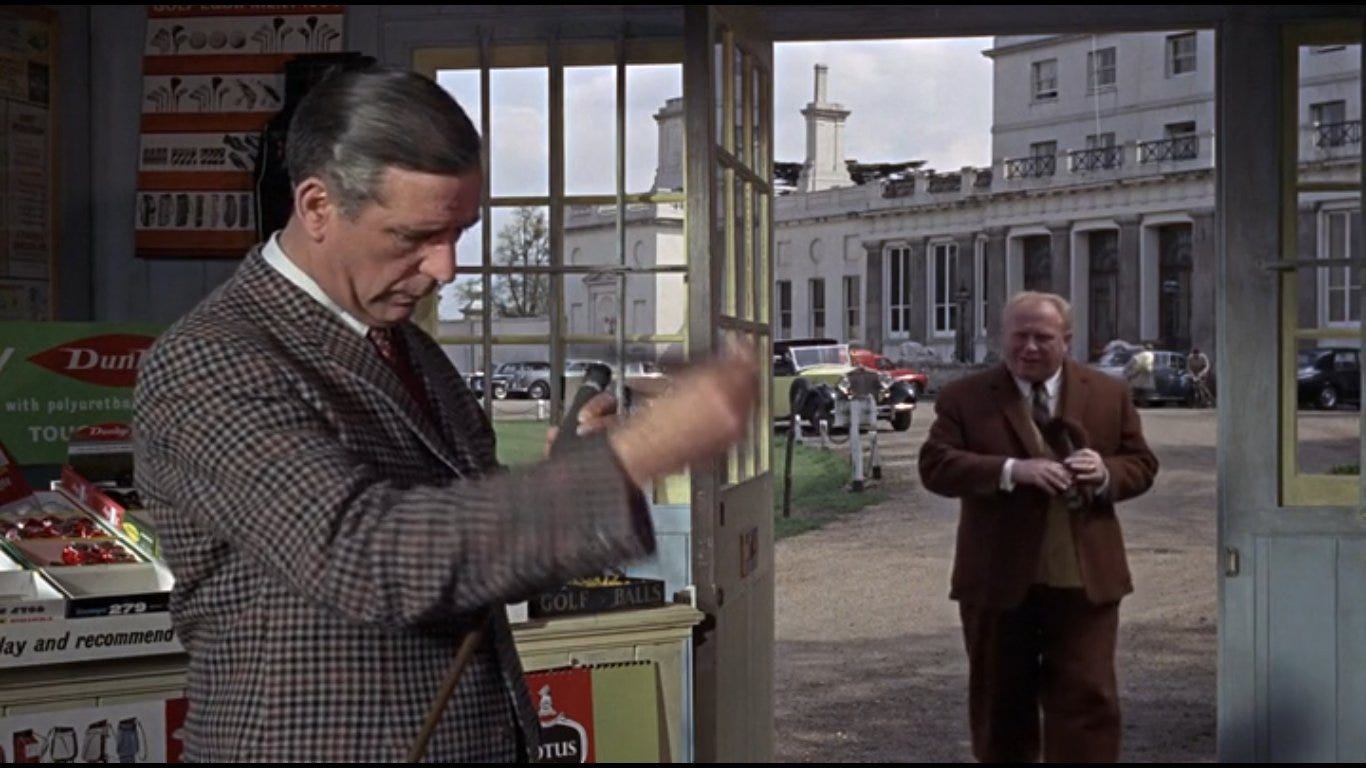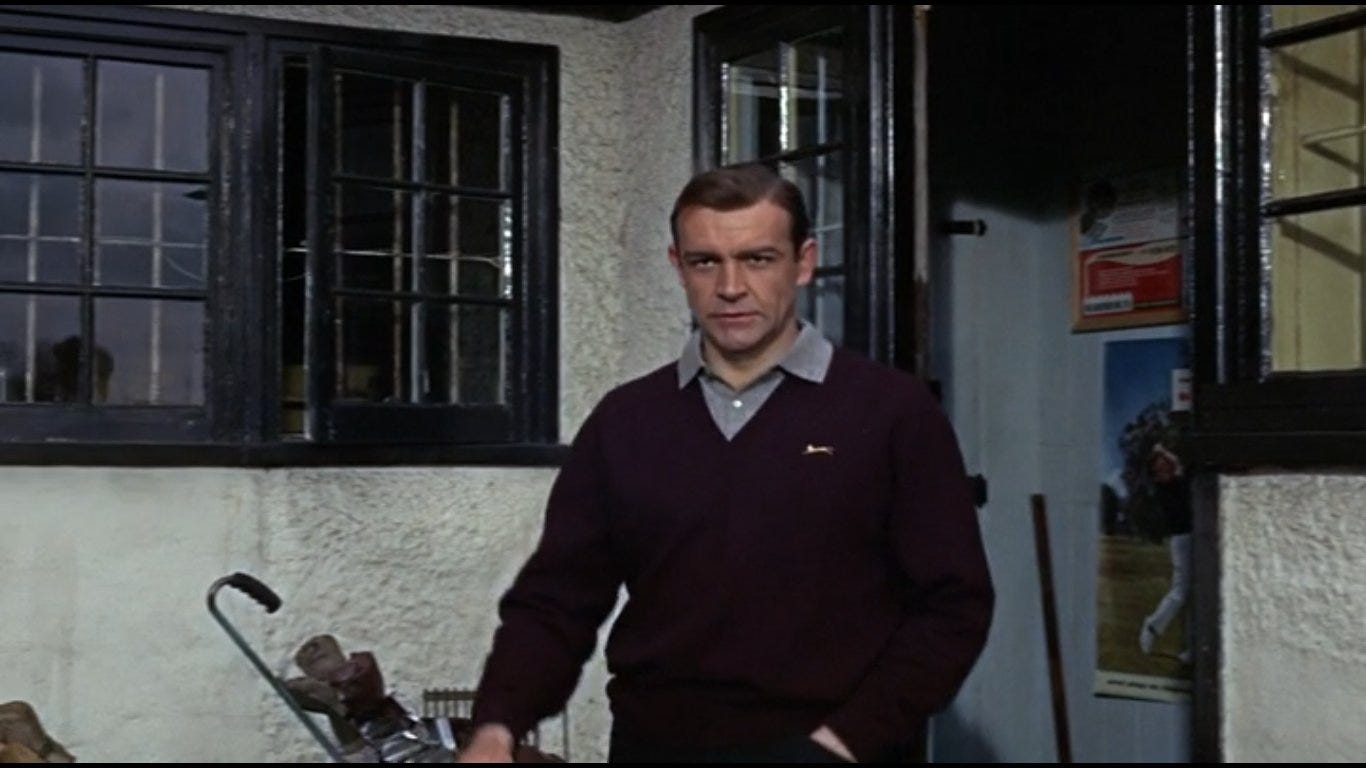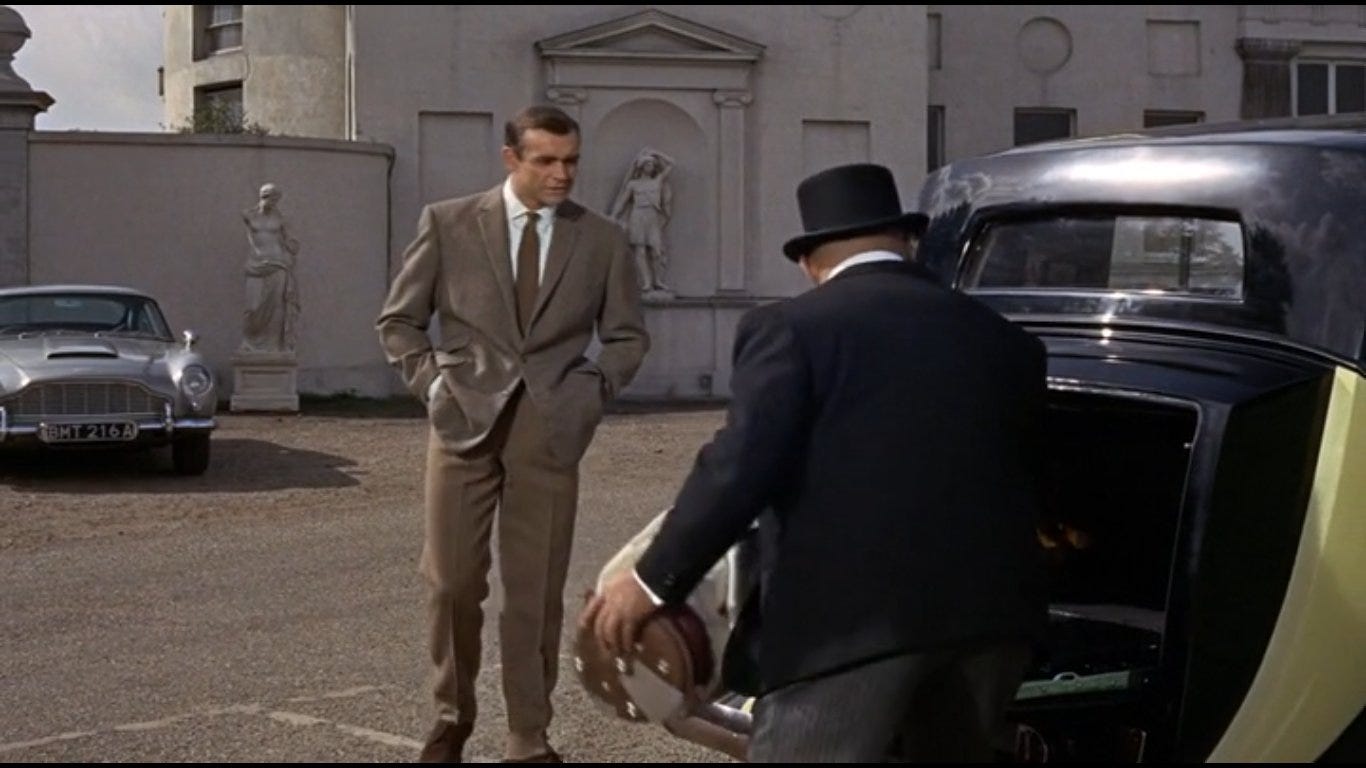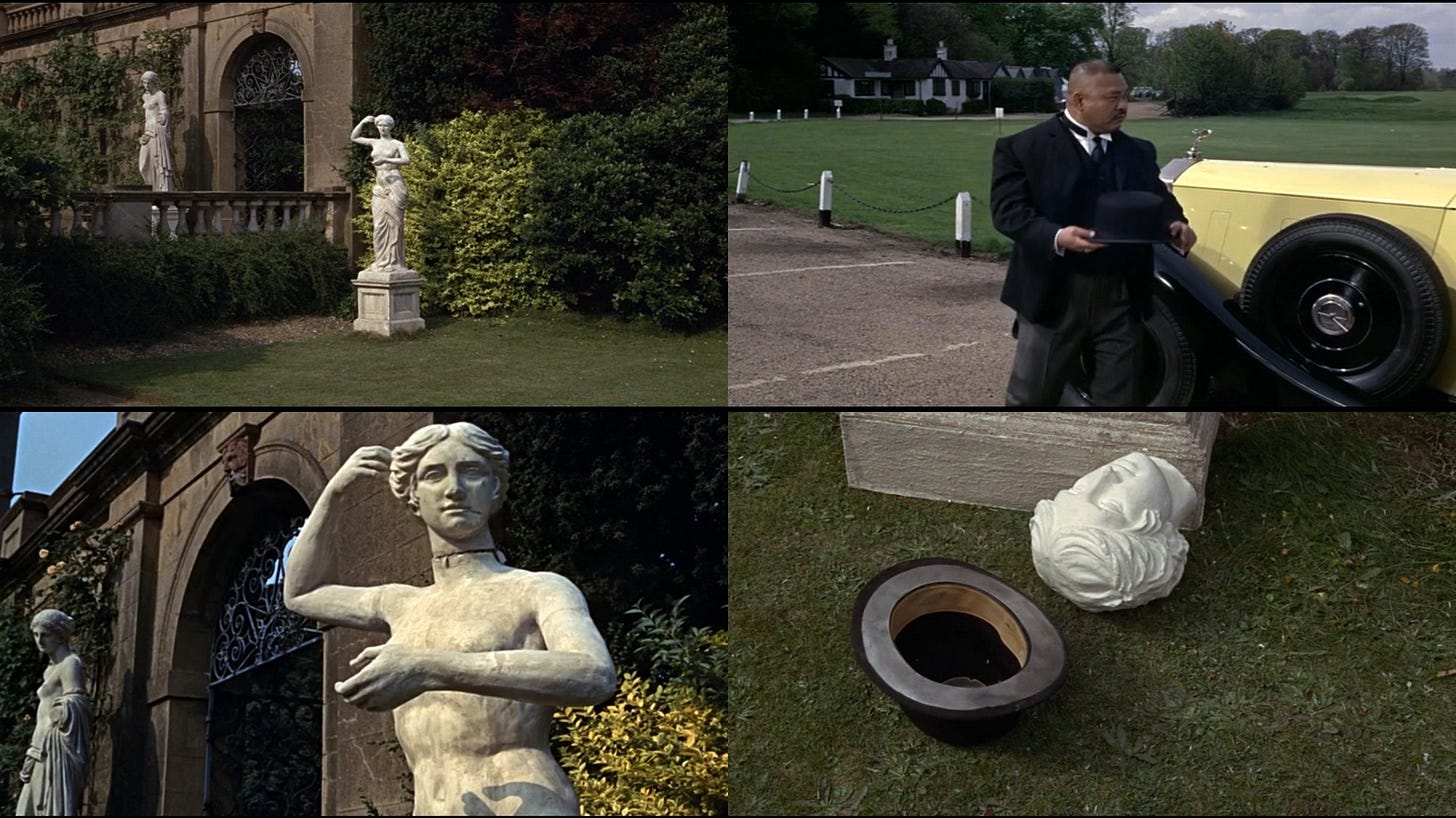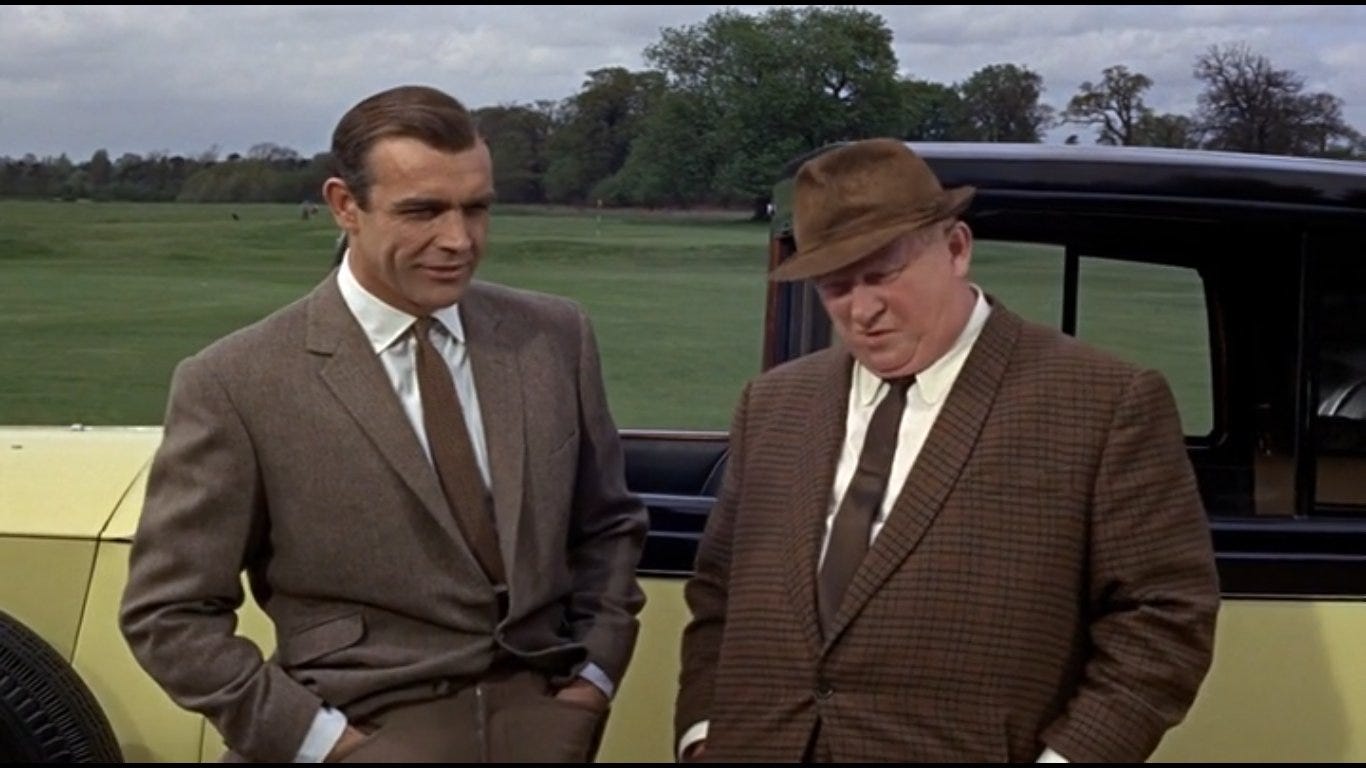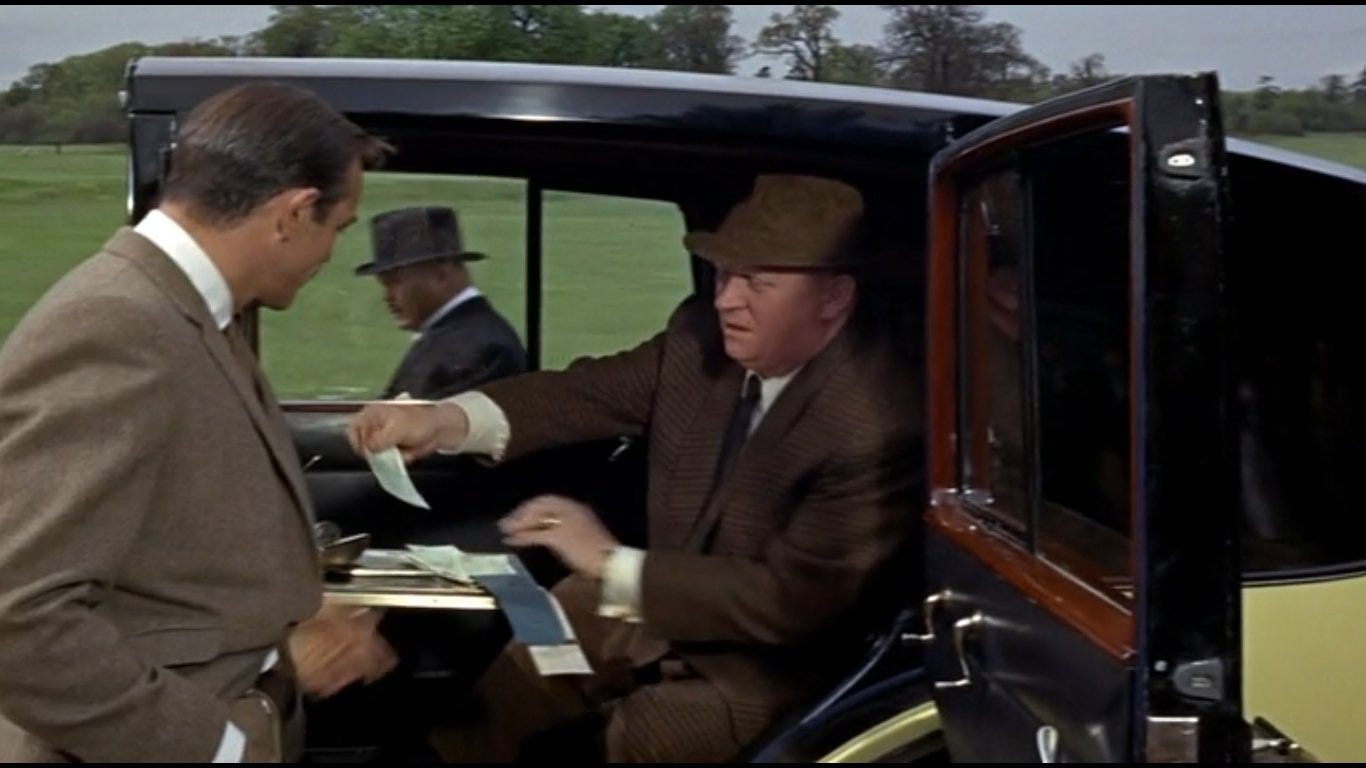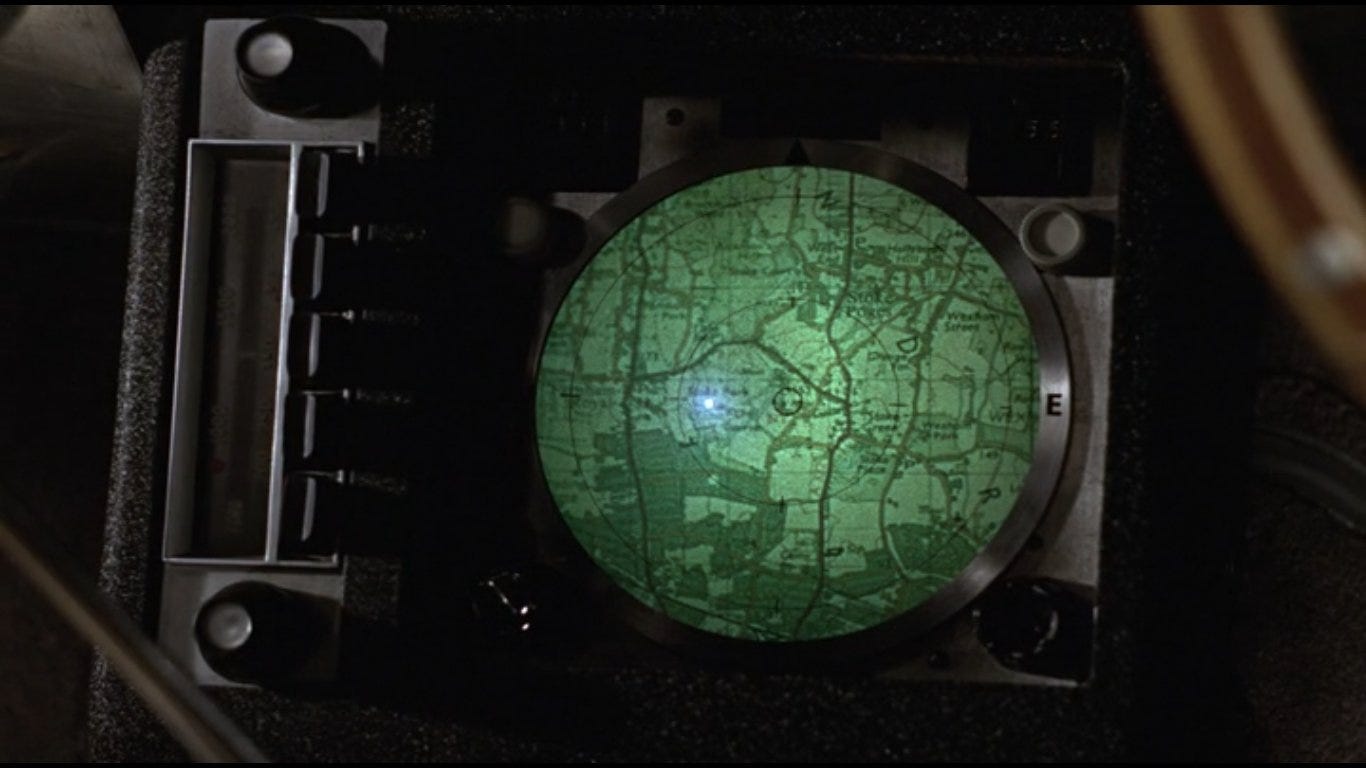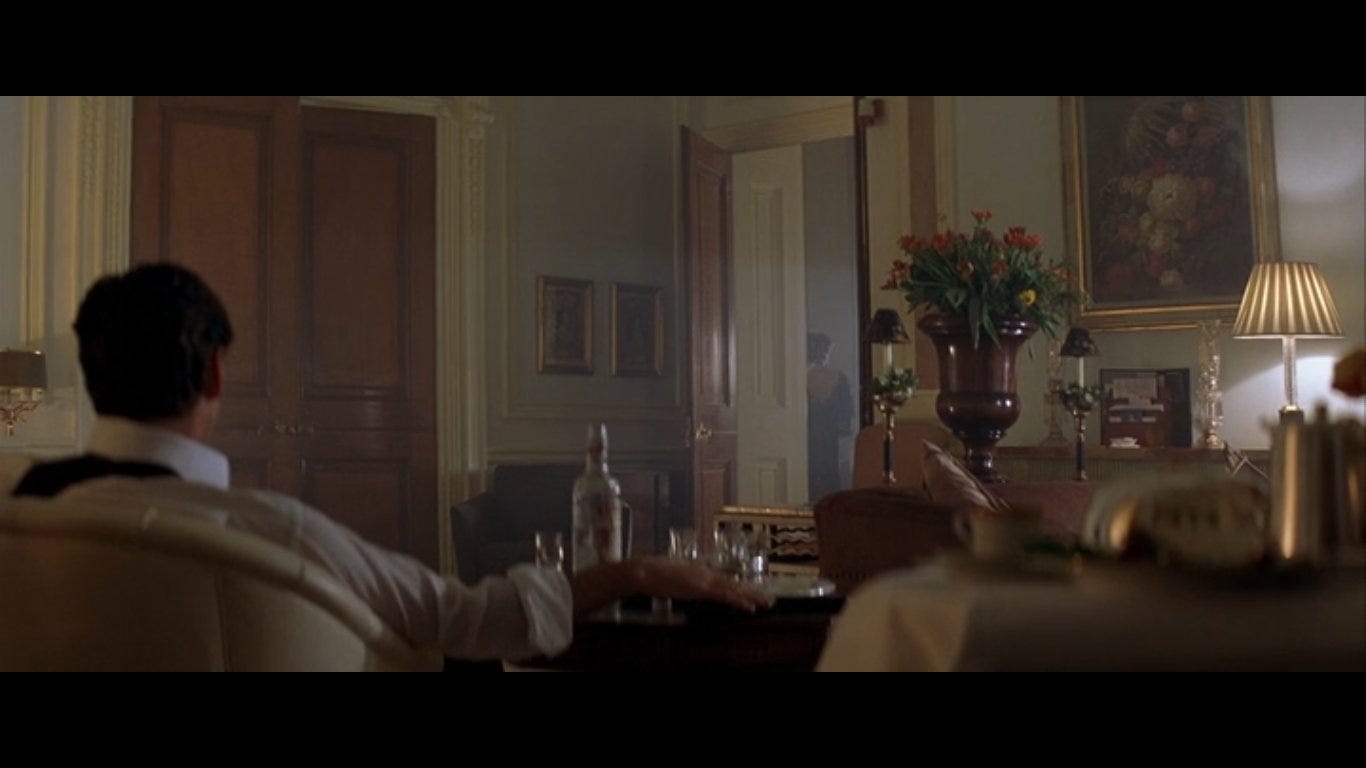Clubs in Film: 'Goldfinger' (1964)
Having looked at the role of clubs in the very first James Bond film, Dr. No (1962), I thought I would look at the conspicuous role played by a real-life club in Goldfinger (1964).
The real-life club
The filming location was Stoke Park, the Buckinghamshire country club used early in the film for the tense round of golf between James Bond and Auric Goldfinger. Country clubs were a US innovation of the 19th century - with a strong influence from the Indian gymkhana clubs of imperial British rule.
Stoke Park is a mansion near the Buckinghamshire village of Stoke Poges designed by James Wyatt in 1788, and built from 1790-1813, surrounded by landscaped gardens by Capability Brown and Humphry Repton. It was built for John Penn, formerly the principal proprietor of the Province of Pennsylvania prior to American independence, and it remained a private home until its conversion into the United Kingdom’s first country club in 1908.
The driving force behind turning Stoke Park into a club was footballing pioneer Nicholas Lane Jackson. Leading golf course architect Harry Colt was commissioned to design the course.
The 19th century saw sports, including golf, cricket & football, grow in popularity by forming organisations that were consciously modelled around a London club. This included the notion of membership, and election with “blackballing.” This club organisation, between established members who had all been vouched for by other members, carried the trappings of gentility (in theory, at least).
And in the film, it provides the context for Bond and Goldfinger's first conxversation. This is not the no-holds-barred competition of a pay-as-you-go casino like Les Ambassadeurs in Dr. No (1962) - it is meant to be a far more genteel setting.
The club in the film
From the outset, Bond and Goldfinger each put each other off their game, as the other is about to hit their ball - Bond by dropping a huge bar of Nazi gold in front of Goldfinger, Goldfinger by asking “Straight rules of golf?” just as Bond hits his ball.
Neither plays fair.
Indeed, the whole meeting over a game of golf shows how perceptive and well-informed Goldfinger is. Long before he tells Bond that it is the second time they have met, Goldfinger meaningfully leans over to suggest, “This meeting is not a coincidence, eh?”
“Let's have a little fun with Mr Goldfinger”: after it becomes apparent to Bond that Goldfinger is cheating at golf, Bond switches his Slazenger 1 ball with a Slazenger 7 he found on the course.
Cheating scandals in sports clubs still had the power to be cause célèbres at the time, and were grounds for expulsion from a club. Fleming, a keen golfer, would have been aware of this. But the incident shows that Bond is no gentleman.
The film’s depiction gives a real sense of Stoke Park as a working country club, including a cutaway scene set in the external cottage away from the main mansion that is used for golf clubs, storage, etc.
It is not particularly glamourous, but is nonetheless shown inside and out, lending a sense of realism.
The main house mansion was also looking distinctly tatty, in poor repair in 1964 - something that remained true for much of the six decades that followed. The notion of a clubhouse that had not seen any major work since the Edwardian era was not particularly unusual in 1960s Britain (or later).
After Bond succesfully out-cheats Goldfinger, Oddjob menacingly does his party piece, with what looks like an obvious polystyrene statue added to the grounds for these shots.
Bond: “Remarkable. But what does the Club Secretary have to say?”
Goldfinger: “Oh, nothing, Mr Bond. I own the Club.”
This is a proprietary club, not a members-owned club. Like the earliest clubs of the 18th century (and some of the fashionable new ones today), it has an owner. And this reflects the real-life Stoke Park being a proprietary club at the club - the mansion’s present owner, who took over in 2021, is its fifth since 1908.
“I assume you want the cheque made out to cash?”
Goldfinger shows that even though he smells a rat, he still goes through the formality of paying his debts from the golf wager. In this way, he shows he is probably less of an absolute rotter than Bond.
And to show that there is absolutely no doubt as to where these club scenes are set, Bond’s homing device in his Aston Martin shows a clearly-labelled “Stoke Park” on the map of the Buckinghamshire countryside. This is not some fictitious Auric Goldfinger country club which happens to have used Stoke Park as a location. It is explicitly supposed to be Stoke Park in the film.
Tomorrow Never Dies
Goldfinger was not the only appearance by Stoke Park in a Bond film. 33 years after the exterior was used, one of the Club’s 49 bedrooms was used as a filming location for interiors in Tomorrow Never Dies (1997) - for the scenes set in a Hamburg hotel room, featuring Pierce Brosnan and Teri Hatcher.
Stoke Park redevelopment
Stoke Park has made a great deal of its Bond history, with plenty of conventions, photoshoots, news articles and promotional videos over the years, usually featuring an ubiquitous Aston Martin DB5.
But it has also had numerous troubles, closing down in 2021 - according to its website, the course and building had “legionella, leaking roof and cracks, wall movement…[course] lacks suitable drainage & irrigation technology leading to flooding & regular course closures.”
Following a three-year refurbishment, Stoke Park reopened on a limited basis late in 2024, with plans for further renovation. But the biggest change was that after 113 years of operating as a private members’ club, it would cease to be a club. Instead, it is now open as a public golf course, on a “pay for play” basis.
(This piece was adapted from an old Twitter thread I wrote on the topic three years ago.)
All screenshots above are copyright 1962, Danjaq LLC and Amazon.
You can view the full and varied backlog of Clubland Substack articles, by clicking on the index below.
Index
Articles are centred around several distinct strands, so the below contains links to the main pieces, sorted by theme.

